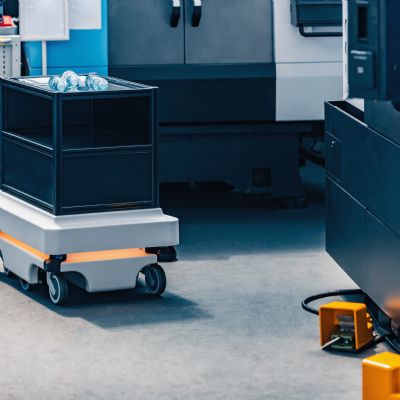Machine Guard Exposure: Inadvertent vs. Intentional Use
April 16, 2025Comments
At a sheet metal shop at the Arnold Air Force base in Tullahoma, TN, journeyman sheet metal workers for an aerospace-engineering company use various types of equipment, including a power shear.
At a sheet metal shop at the Arnold Air Force base in Tullahoma, TN, journeyman sheet metal workers for an aerospace-engineering company use various types of equipment, including a power shear. Using the shear, an operator slides a piece of sheet metal by hand across the machine table until it bumps up to a backstop. Then the operator depresses a foot pedal to initiate the cutting process. Holddown pistons lower to secure the sheet metal in position and the blade shears the sheet to the desired length. For protection, 13 holddown pistons in front of the blade and a bell-shaped guard that completely surrounds each piston up to a finger or rake guard prevent worker access to the blade.
Unfortunately, a fingertip accident occurred. Here’s how the OSHA Review Commission (OSHRC), when it was fully staffed with three commissioners, unanimously reversed a finding of inadequate machine guarding. As a result, they vacated the 1910.212 standard citation due to their perception of intentional circumvention of the guarding.
“On the day of the accident, an ATA employee with over 20 years of experience was cutting a 3-in. piece of metal from a 6-in.-long piece. Because the piece the employee was using was so small, it had to be held in place during the cutting operation to ensure it did not fall off the back of the shear’s table surface. The employee intended to hold it by placing another piece of metal on top of it, but he initially used his finger to hold the piece in place under one of the holddown pistons. Because he was wearing gloves and his fingers would not fit under the holddown-piston’s guard, he removed one of the gloves and circumvented the guard surrounding the holddown piston, placing his finger underneath the guard and piston and on top of the piece he was cutting. Before he could put the second piece of metal on top of the first piece and remove his finger, the employee inadvertently pressed the shear’s foot pedal, causing the holddown piston to lower and crush the tip of one of his fingers.”
The commissioners distinguished between “intentional” circumventing of the machine guarding and “inadvertent”—and viewed as establishing potentially different levels of machine guarding under the general performance standard of 1910.212. They relied on the conflicting testimony, seemingly ignored by the trial judge, as to three other experienced operators who all stated that they would never use this shear to try to cut a piece of metal as small as the one used by the injured operator, and that they would never place their fingers underneath a piston guard. In the commissioners’ analysis:








